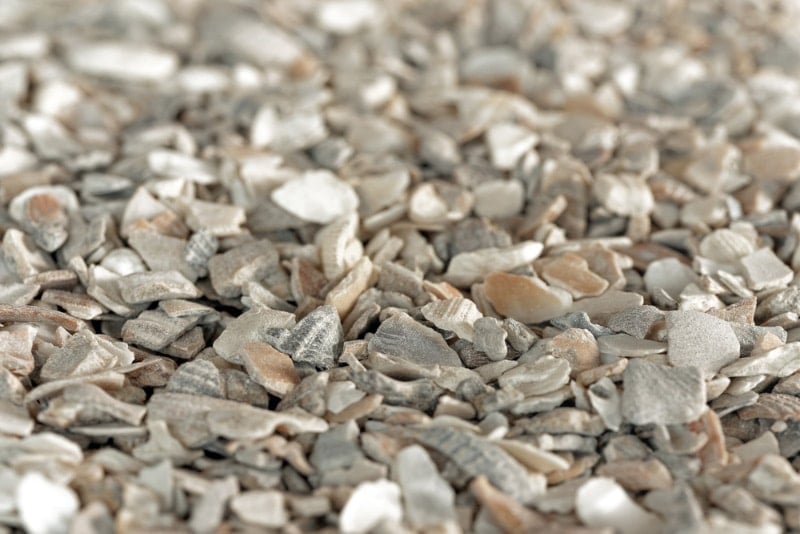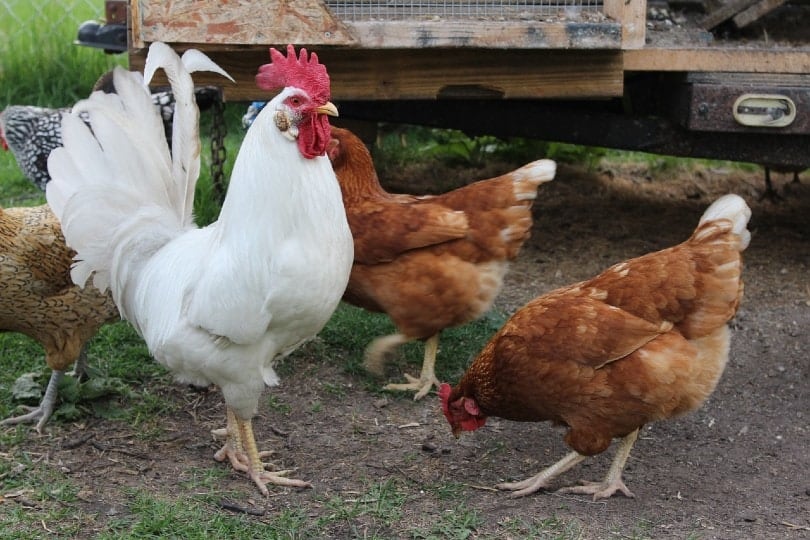Approved by Dr. Luqman Javed
First-time backyard chicken keepers are often baffled when they see their chickens eating rocks and stones. If you wonder why chickens eat these non-food items, we’ll tell you why they do it. Chickens eat rocks and stones to help them digest food—it’s that simple.
Even though rocks offer no nutritional value and don’t taste good, chickens eat them because they help grind the food inside their crops and their gizzards. The crop and the gizzard are two specialized organs in a chicken’s digestive system. All the food that a chicken eats, like grains and seeds, is first stored in the crop, where rocks help start breaking it down before it passes through the esophagus and proventriculus, which secretes digestive enzymes. Then the food ends up in the gizzard, an organ with strong muscles, along with more rocks that help grind the predigested food into smaller digestible particles that the chicken’s body uses for nutritional purposes.

How a Chicken Eats
A chicken’s diet is made up of things like seeds, grains, grasses, and insects. All these things a chicken walks around and eats must be properly chewed and digested. However, unlike us humans who use our teeth to chew food, chickens are toothless, which means they need an alternative method to break down their food.
When a chicken pecks the ground and eats, the food travels to the crop, which is a storage area in the esophagus. The crop contains rocks that begin the grinding process. From the crop, the food goes to the chicken’s glandular stomach, or proventriculus, where enzymes start breaking it down. Then, the food goes to the gizzard, where the strong muscles and more of the grit or swallowed rocks break it down further. The rocks and stones the chicken has collected while eating work like teeth to grind the food before traveling into the bird’s intestinal tract.
In essence, the small rocks and stones work like our molars, grinding the food up well so it can be turned into a liquid and properly digested. Chickens actually ingest the food first and then “chew” it, which seems backward, but it works for our feathered friends!
What Chicken Grit Is and Why Do Chickens Need It?
Chicken grit is nothing more than a mixture of all those small stones and crushed rocks that chickens pick up off the ground when eating their regular food. This grit’s mechanical force and the digestive enzymes’ chemical actions are responsible for the digestive process. In this way, the birds can get all the available nutrition from the foods that they eat.
If you provide your chickens with commercial chicken pellets, your birds do not need grit to break them down. However, if you feed your chickens whole grains or allow them to forage for their food, you should provide grit so they can digest these larger food particles.
How to Choose Chicken Grit
You can find chicken grit for sale at farm supply stores and online. When you start shopping for grit, you’ll see insoluble grit that’s typically made of granite and soluble grit, which is digestible. Soluble grit is most often made of oyster shells, and it offers the additional benefit of providing your flock with supplemental calcium.
To work properly, the grit you feed your flock needs to be of a particular size. If it’s too big, your chickens won’t be able to swallow it. If it’s too small, it will be passed right through the digestive system without working at all.
Chicken grit is typically sold in small and large sizes. The small size is for young chicks and small chickens. The large size grit is appropriate for mature and large breed chickens, so be sure to choose the type that matches your flock.

How to Feed Grit to Chickens
The thing about chicken grit is that it doesn’t matter how much you give your chickens because they’ll only eat as much as they need. Chickens aren’t fussy about how they eat grit either which is great.
You can simply put some grit in a standard poultry feeder, so your flock knows where to get the grit they need. Another option is to use a poultry feeder and waterer to ensure your chickens get the grit and water they need.
Speaking of water, chickens need plenty for digestion. Ensure the water you give your chickens is clean and free from contaminants like dirt and droppings.

Conclusion
Now that you know your chickens are toothless and eating rocks and stones for a reason, you don’t have to worry about it anymore. Just be sure your chickens have access to grit so they can digest all those yummy seeds, grains, grasses, and insects they eat throughout the day. And don’t forget to provide your flock with fresh and clean drinking water!
Featured Image Credit: AngelaQuinn, Pixabay
